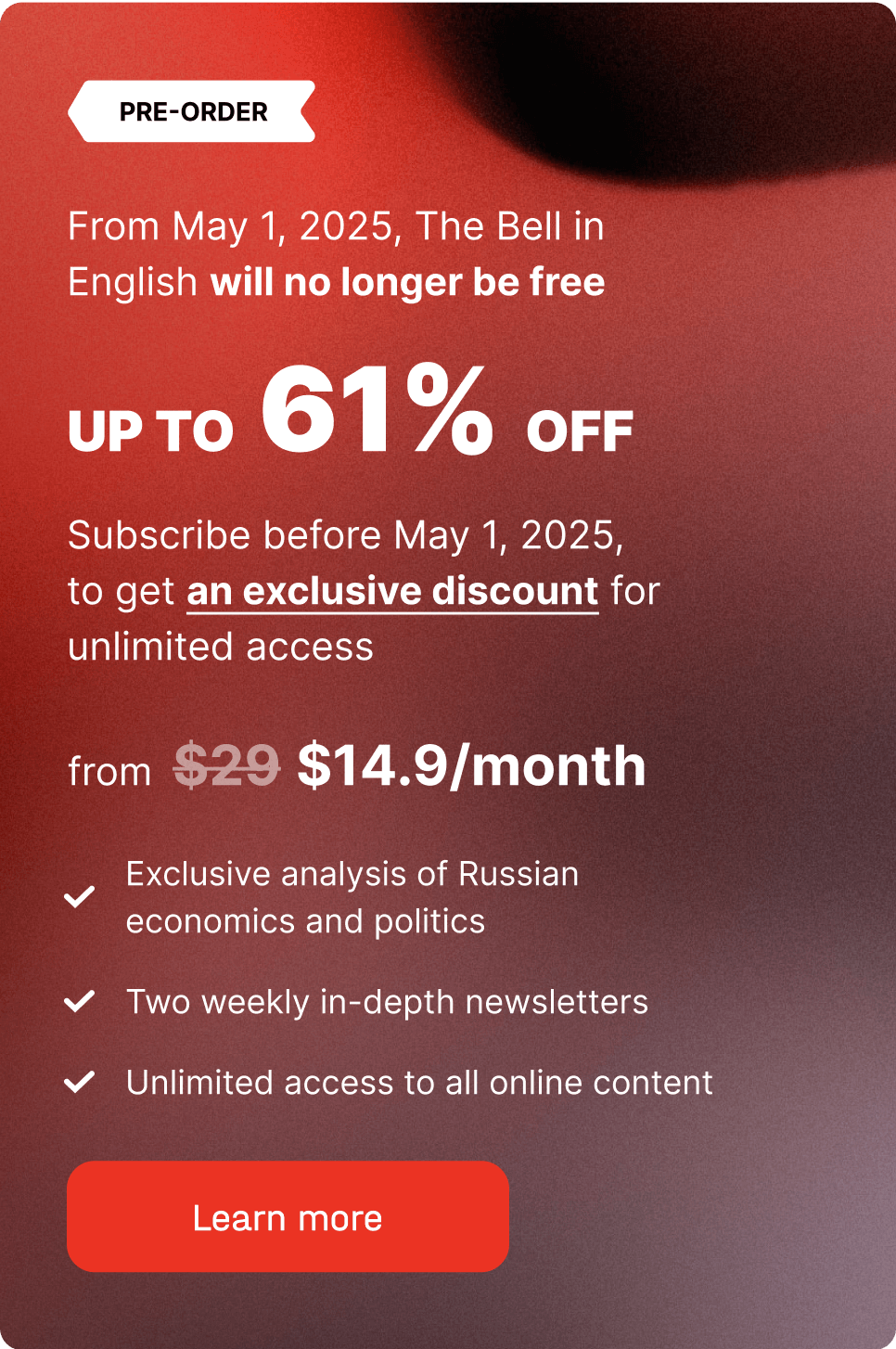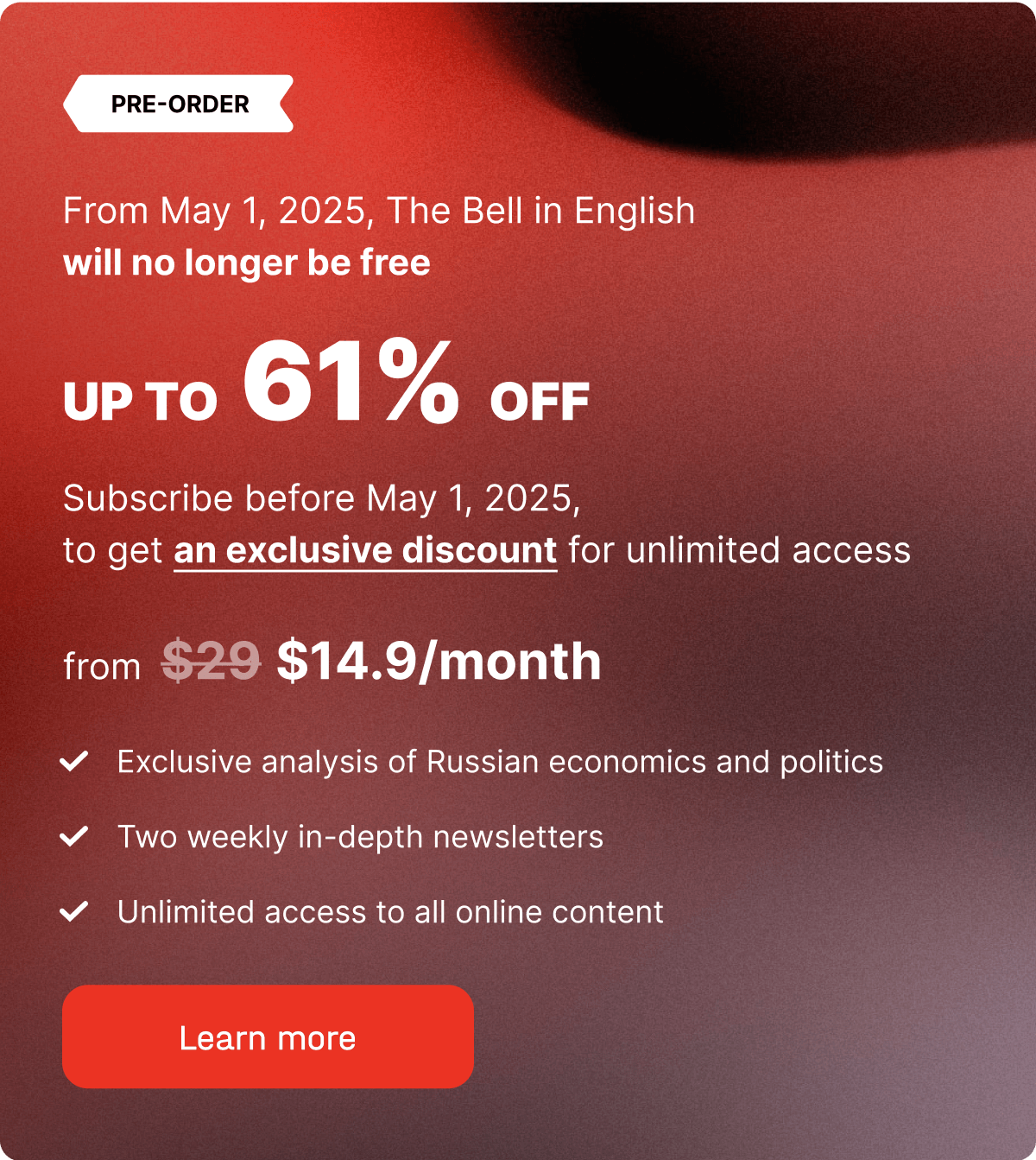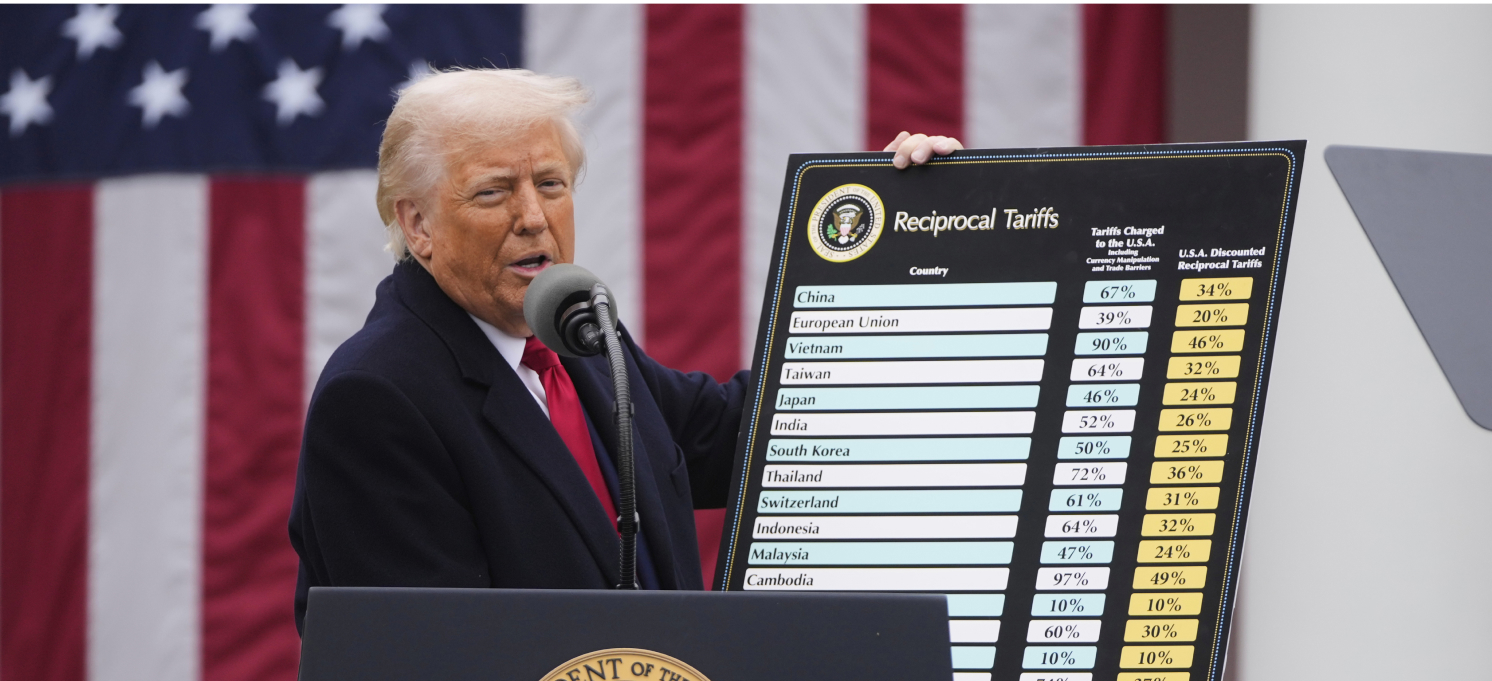
Does the price cap on Russian oil actually work?
Hello! This is your weekly guide to the Russian economy — brought to you by The Bell. We are focusing on the G7 price cap on Russian oil and looking at some of the arguments about whether it works — or not.
Gauging the economic pain inflicted on Russia by the oil price cap
Less than a year after the G7 countries imposed a price cap on Russian oil, it’s clear that nobody is sticking to the limit of $60 per barrel. Russia has officially said its export prices for Urals crude average over $80. U.S. officials and their supporters insist that the ceiling nonetheless works, albeit in a different fashion, due to the increases in transport and insurance costs to deliver oil to Asia.
Does the price cap work?
The G7, the European Union and Australia agreed on a price cap on Russian oil in December. The price was set at $60 per barrel. The measure included restrictions that would prevent Russia from using Western infrastructure (insurance, transportation, etc.) to deliver Russian oil purchased at a higher price. The cap had two aims: reduce Russia’s revenue while avoiding a reduction in supply that would drive up global prices. The cap works in tandem with the EU’s oil embargo.
From day one, there were questions whether it would work. Even before the restrictions took effect, U.S. officials warned that up to 90% of Russian oil supplies could bypass the cap. It was also unclear what the position of India and China would be — they both started buying large amounts of Russian oil following the full-scale invasion of Ukraine in February, 2022. Almost as soon as the restrictions were imposed, it became clear Russian oil supplies could be successfully traded to Asia, evading the new rules, and neither India nor China observed the cap.
There were hopes that the price cap would enable India and China to negotiate discounts on oil supplies from Russia, reducing its oil-linked revenue. But according to Sergei Vakulenko, a researcher at Carnegie Russia Eurasia Center in Berlin, this was never more than a short-term outcome. “Maybe it happened, but not for long,” he said. “The leverage handed to India and China weakened because when they asked: ‘dear Russia, you no longer have anybody else to sell oil and gas to, so how about lowering your prices?’ Russia replied: ‘Of course we can, but you have nobody else to buy from.’”
The effectiveness of the price cap has been tested in recent months amid rising global oil prices. Before the start of the war in the Middle East, prices had been steadily rising since June due to reduced output in Russia and Saudi Arabia. That enabled Russia to sell oil at prices at approximately the $60 cap imposed. Since a presidential decree bans exports to countries that support the cap, 90% of Russian oil exports since 2022 have been redirected to Asia — mostly India and China.
India last month was paying $80 a barrel for Russian oil, according to Reuters. This is backed up by official figures from Russia’s finance ministry: according to its data, the average price for a barrel of Urals in September was $83.08.

How do Western officials defend the measure?
Faced with awkward questions, those who came up with the price cap have produced different answers at different times. At the beginning of this year, it seemed that the price cap was working well — pricing agencies Argus and Platts reported a catastrophic slump in prices for Russian oil, with Urals trading for as little as $38 against $80 for a barrel of Brent. U.S. officials immediately attributed this to the price cap and celebrated its success.
By the spring, though, it had become clear that the Argus and Platts data, which is reliable when Russian oil is traded through European hubs, could not be trusted for the Asia route. As early as January, there were assumptions that the real price of Russian oil was much higher and by March this was confirmed from calculations based on foreign trade data from buyers.
Russia’s Finance Ministry kept citing irrelevant Argus figures in its calculations (the reasons for this were complex). This deprived Russia of some of this oil windfall, but instead of going to the treasury, the money ended up in the foreign accounts of Russian companies (where it could be easily accessed by the Kremlin). Meanwhile, U.S. officials continued championing the price cap.
“At the outset, the price cap was met with doubt that it would be workable. Today, there is clear evidence of its success… Russian government oil revenues in the first five months of 2023 are down nearly 50% from a year prior. This decline in oil revenue has occurred despite the fact that Russia is exporting more crude oil today than it did at the onset of the war. Despite higher exports, Russia is making less money because its oil now trades at a discount of 25% relative to other global oil,” U.S. Deputy Treasury Secretary Wally Adeyemo said in mid-June.
But a couple of months later, when the official price of Urals, according to Finance Ministry data, exceeded $60 a barrel, the U.S. had to change its tune. In early August, Assistant Secretary for Economic Policy Eric van Nostrand admitted that a shadow oil fleet and alternative insurance providers meant that Russia could sell its oil for more than the cap allowed. However, he argued that Moscow had to spend this cash on infrastructure and that reduced the funds available to the Kremlin for its war in Ukraine. “Russia still has to choose between accepting a huge discount and spending heavily to create a new ecosystem [for trading oil]. Our approach was designed to ensure that the country has to make these difficult choices,” said van Nostrand at a Brookings Institute seminar last month.
What are the arguments that it’s not working?
Russia’s additional costs for creating an alternative oil infrastructure can be divided roughly into two — oil transportation, and transportation insurance. By the time the cap was introduced, the G7 and the EU had significant leverage in both markets: companies from countries that observed the cap transported 55% of Russia’s oil exports and controlled 90% of the insurance market for that transportation.
Optimists believed Russia would not be able to compensate for that kind of volume. But they were largely wrong. By last month, 60% of Russian oil exports went without Western shipping or insurance. Russia has set up a “shadow fleet” of old tankers to transport its oil. Often, these vessels are uninsured (three quarters of Russian oil is now transported by sea without Western insurance) and transponders that could locate the tankers are switched off, or reprogrammed.
It’s impossible to calculate how many tankers are in this shadow fleet. There is no single database for the sale and purchase of ships, and private shipping firms are not obliged to declare their assets, according to the press service of Veson Nautical, a company that specializes in organizing maritime transport. According to various estimates, the shadow fleet could include up to 600 vessels. The Kyiv School of Economics has a more specific estimate — 153 tankers as of August.
Yale academic Jeffrey Sonnenfeld detailed the impact of each kind of incremental cost for Russia in a recent column defending the price cap. It’s worth noting that Sonnenfeld is not just an enthusiast for the cap: he was one of the consultants who developed the whole idea. The expert found that for each barrel of Russian oil sold, the additional costs amount to about $36:
- If we assume that Russia, exporting an average of 1 million barrels of oil a year, purchased 600 old tankers for $2.25 billion, the additional cost for each barrel is about $2.
- Since Russia now exports almost all of its oil to India and China, the average tanker journey is three times longer: 2,862 miles at the start of 2022, compared with 9,271 miles in 2023. That adds about $10 in costs to each barrel of export Russian oil.
- Insurers are now charging a greater risk premium, equivalent to an extra $4 million for every trip, which knocks $4 off the value of every barrel exported from Russia. In addition, U.S. officials claim that Russia’s Central Bank designated $9 billion to replace Western insurance schemes.
- Russia’s energy companies had to raise the costs of maintaining oil wells after Western businesses exited the market due to the invasion of Ukraine. For state-owned oil giant Rosneft alone, the costs went up by $10 billion, adding another $10 to each barrel.
- Finally, there are costs associated with expanding port capacity. Rosneft is currently completing its Vostok Oil project at Taimyr. The cost has risen from $100 billion to $120 billion. That adds a further $10 in costs to every barrel.
There is much that can be disputed in Sonnenfeld’s calculations. For one, he argues that the price cap “has already meaningfully increased Russia’s costs to drill and transport that oil.” However, it’s hardly legitimate to factor planned works on enlarging ports into prices for oil exports in 2023.
Secondly, the $10 per barrel that Sonnenfeld attributes to longer journeys Russian tankers must make to reach Asian buyers has little to do with the price cap. It’s actually a consequence of the European oil embargo.
Removing that debatable $20 a barrel, Sonnenfeld’s costs appear more realistic at about $16 a barrel of additional costs. That’s no small sum. However, Vakulenko believes even this figure is too high: he suggests that Russia’s lost export revenues due to the price cap are closer to 10-15% (i.e. $8-12 per barrel in September).
It is safe to assume the introduction of the price cap has cost Russia at least $11.3 billion in 10 months — just over half the value of Russian oil exports for September.
By and large, the price cap works, according to the Kyiv School of Economics (KSE). In the first seven months of 2023, almost all oil exports from Russian ports in the Baltic Sea did not violate the price ceiling, according to KSE. In August-September, 48% of oil exports were conducted in accordance with the cap, while the remaining 52% were made using the "shadow fleet."
At the same time, Russia's revenue from oil sales may be less than that reported by the International Energy Agency (IEA). At the end of September, the average export price of Russian oil was $81.8 per barrel, the IEA said. But KSE believes that it could be much lower — $67.5. This is because it is likely that the IEA does not reflect the prices at which Russian oil is sold in accordance with the cap. Instead, KSE believes, the agency may only report the prices quoted by market participants themselves, who use the "shadow fleet" to bypass the restrictions.
How well is the price cap enforced?
One of the big problems with the price cap right now is that the authorities that should enforce it are not doing the job. Back in spring a group of economists led by Benjamin Hilgenstock from KSE analyzed oil exports from the Pacific port of Kozmino through the first four months of 2023 — and concluded that at least 24 million barrels were sold at a price above the cap. These were transported in vessels subject to restrictions. “These violations were likely the consequence of direct falsification of the reports that oil importers must provide to G7/EU shipping and insurance companies to demonstrate that they are observing price restrictions,” explained the economists. So far, there have been no consequences.
It’s quite easy to bypass the documentation needed to show technical compliance with the price cap, according to Abhi Rajendran, director of oil market research at Energy Intelligence. In practice, service providers need only obtain a piece of paper stating that the oil was purchased at a price lower than the ceiling.
Another problem is that Russia faces no restrictions on the used tanker market. “More than 80% of the shadow fleet that is currently transporting Russian oil was bought on the secondary market. Technically, if you are selling a “used” tanker, you should not sell it to Russia,” Craig Kennedy, a member of Harvard’s Davis Center, said recently. The fact that the shadow fleet is not subject to sanctions is another major problem with the oil price cap, added Rajendran.
“Since nobody is willing to enforce strict compliance with the price cap, European shipowners carry on working regardless,” said Vakulenko.
The first punishment for non-compliance with the price cap was imposed only this month. That was when the U.S. sanctioned two companies: Turkey’s Ice Pearl Navigation Corp and Lumber Marine SA from the UAE. Ships from these organizations called at Russian ports and used the services of U.S. companies while transporting oil. Ben Harris, the director of the Brookings Institution’s economic research program and one of the architects of the price cap, has called these sanctions the “first strong step toward an effective second phase” of restrictions.
However, Vakulenko is skeptical about these sanctions. He points out that Ice Pearl Navigation Corp and Lumber Marine SA were effectively legal entities, each of which had just one tanker carrying oil.
Why the world should care
Many believe that tighter enforcement is the key to making sure the price cap is as effective as possible. “For the price cap regime to inspire any confidence, to maintain increased transaction costs, there needs to be real fear that any violation will bring punishment, “ said Vakulenko. “The U.S. Department of the Treasury has the strength and capacity to punish people… But does it have the power, design and political capital to go after everyone involved in trading [above the cap]? That’s the big question and, for the moment, the market thinks the answer is no.”
Central Bank hikes rates in response to inflation
Russia’s Central Bank raised its base rate Friday by two percentage points from 13% to 15%. Now Russia’s rate is just one percentage point less than in war-torn Ukraine (16%).
In the 10 years prior to the war, the Central Bank only once pushed rates to this level – in late 2014, when plunging oil prices saw the ruble collapse from 40 to 80 against the U.S. dollar. Even after the invasion of Ukraine, the Central Bank only briefly raised the rate to 20% and had it back into single figures by June.
This current increase is the fourth in a row. The Central Bank reverted to its tightening policy in July, after the ruble again began a sharp fall against the U.S. dollar and inflation picked up pace. So far, the government has been unable to bring this under control. September’s inflation figure reached 14.6% SAAR (annualized, seasonally adjusted), while in early October the ruble again approached 100 against the greenback. The ruble remains among the three worst-performing currencies in 2023.
The increase in the base rate and government measures (principally President Vladimir Putin’s decree on repatriating foreign currency earnings) helped the ruble climb to 94 against the U.S. dollar earlier this month. However, the bank does not think Putin’s ruling will have a lasting impact.
“We believe that such restrictions can only be efficient over a short period, slightly accelerating the effect of fundamental factors.” Central Bank chief Elvira Nabiullina said Friday while commenting the rise in interest rates.
Most analysts expected the bank to increase rates at its board meeting on Oct. 27, but only to 14%. However, the regulator proved more aggressive than expected. This is likely because the bank is not only looking at inflation and the exchange rate, but also the 2024 budget, which appeared after the last rate increase and included record military expenditure. “An additional pro-inflationary factor on the forecast horizon is the easing of budget policies. Thus, we need a more rigid monetary policy in response,” Nabilullina said.
It's entirely possible that there will be further rises. Updated macroeconomic prognoses suggest the Central Bank is reviewing the possibility of taking rates to 16% at the year’s final board meeting in December.
Key figures
The Euroclear depositary earned $3 billion from Russian assets and investments frozen under sanctions. This might be subject to a special tax to support rebuilding in Ukraine if the EU authorities agree on such a mechanism. In total, €200 billion of frozen Russian assets are held by Euroclear.
Russian companies could lose $50 billion a year from the government’s latest protectionist measure – a six-month ban on poultry exports. The decision was rushed through after Putin told Agriculture Minister Dmitry Patrushev that the rise in the price of chicken in Russia was unacceptable. An immediate ban on exports could increase prices, though, with manufacturers responding by reducing production.
Further reading



PAID SUBSCRIPTION LAUNCH
From May 1, 2025, The Bell in English will no longer be free
From May 1, 2025, all The Bell’s newsletters and online content will be behind a paywall. We have taken this decision so that The Bell can remain financially independent, and maintain our high standards of journalism and economic expertise






